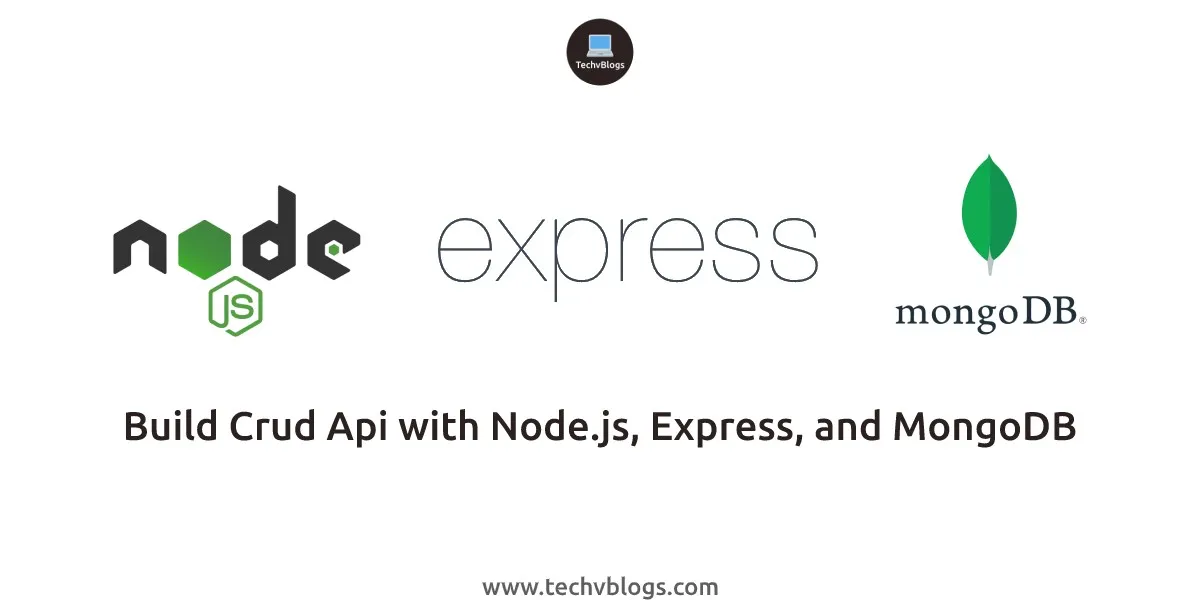
Currently, most of the websites operate on an API-based backend
structure, where we just send a request from the front end of the
website by calling an API and obtaining the required results. In this
blog, we are going to build a simple CRUD (Create, Read, Update and
Delete) app with the application of Node JS, Express JS, and MongoDB
from the basics. Before we jump into the application, let’s look into
the tools we are going to use.
Express
is one of the most popular web frameworks for node.js. It is built on
top of the node.js HTTP module and adds support for routing,
middleware, view system, etc. It is very simple and minimal, unlike
other frameworks that try to do way too much, thereby reducing the
flexibility for developers to have their own design choices.
Mongoose
is an ODM (Object Document Mapping) tool for Node.js and MongoDB. It
helps you convert the objects in your code to documents in the
database and vice versa. Mongoose provides a straightforward,
schema-based solution to model your application data. It includes
built-in type casting, validation, query building, business logic
hooks and more, out of the box.
CRUD
is an acronym for Create, Read, Update and Delete. It is a set of
operations we get servers to execute (POST, GET, PUT and DELETE
requests respectively). This is what each operation does:
Create (POST) — Make something
Read (GET) - Get something
Update (PUT) — Change something
Delete (DELETE)- Remove something
Before proceeding to the next section, Please install MongoDB on your machine if you have not done it already. Check out the MongoDB installation manual for any help with the installation.
Also, In this blog, we'll heavily use ES6 features like let, const, arrow functions,promises etc. It's good to familiarize yourself with these features.
In this blog, we'll be building a CRUD App with Node.js, Express, and MongoDB. We'll use Mongoose for interacting with the MongoDB instance.
Step 1: Creating the Application
Fire up your terminal and create a new folder for the application.
mkdir crud-node-express
Initialize the application with a package.json file
Go to the root folder of your application and type npm init to initialize your app with a package.json file.
cd crud-node-express
npm init
Note that I’ve specified a file named server.js as the entry point of our application. We’ll create server.js file in the next section.
Step 2: Install dependencies
We will need express, mongoose, and body-parser modules in our application. Let’s install them by typing the following command:
npm install express body-parser mongoose --save
Setting up the Web Server
Let's now create the main entry point of our application. Create a new file named server.js in the root folder of the application with the following contents:
const express = require('express');
const bodyParser = require('body-parser');
const app = express();
app.use(bodyParser.urlencoded({ extended: true }))
app.use(bodyParser.json())
app.get('/', (req, res) => {
res.json({"message": "Hello Crud Node Express"});
});
app.listen(3000, () => {
console.log("Server is listening on port 3000");
});
Step 3: Configuring and Connecting to the database
Create a new folder config in the root folder of our application for keeping all the configurations
mkdir config
cd config
Now, Create a new file database.config.js inside config folder with the following contents:
module.exports = {
url: 'mongodb://localhost:27017/crud-node-express'
}
Please run the server and make sure that you’re able to connect to the database
node server.js
Step 4: Create Mongoose Model
Models are fancy constructors compiled from Schema definitions. An instance of a model is called a document. Models are responsible for creating and reading documents from the underlying MongoDB database. Create a folder called model inside the app folder. Create a user.js file and paste the below code.
var mongoose = require('mongoose');
var schema = new mongoose.Schema({
email: {
type: String,
required: true,
unique: true
},
firstName: {
type: String,
default: ''
},
lastName: {
type: String,
default: ''
},
phone: String,
});
var user = new mongoose.model('User', schema);
module.exports = user;
Conclusion
CRUD API provides a standard set of operations for interacting with resources or entities in a system. The four fundamental operations—Create, Read, Update, and Delete—enable developers to perform basic data manipulation and management. These operations are typically associated with HTTP methods in RESTful APIs, where resources are identified by URLs.
CRUD APIs serve as a foundational component in many software systems, offering a standardized way to manage data. When well-designed and implemented, CRUD APIs contribute to the interoperability, maintainability, and scalability of applications.